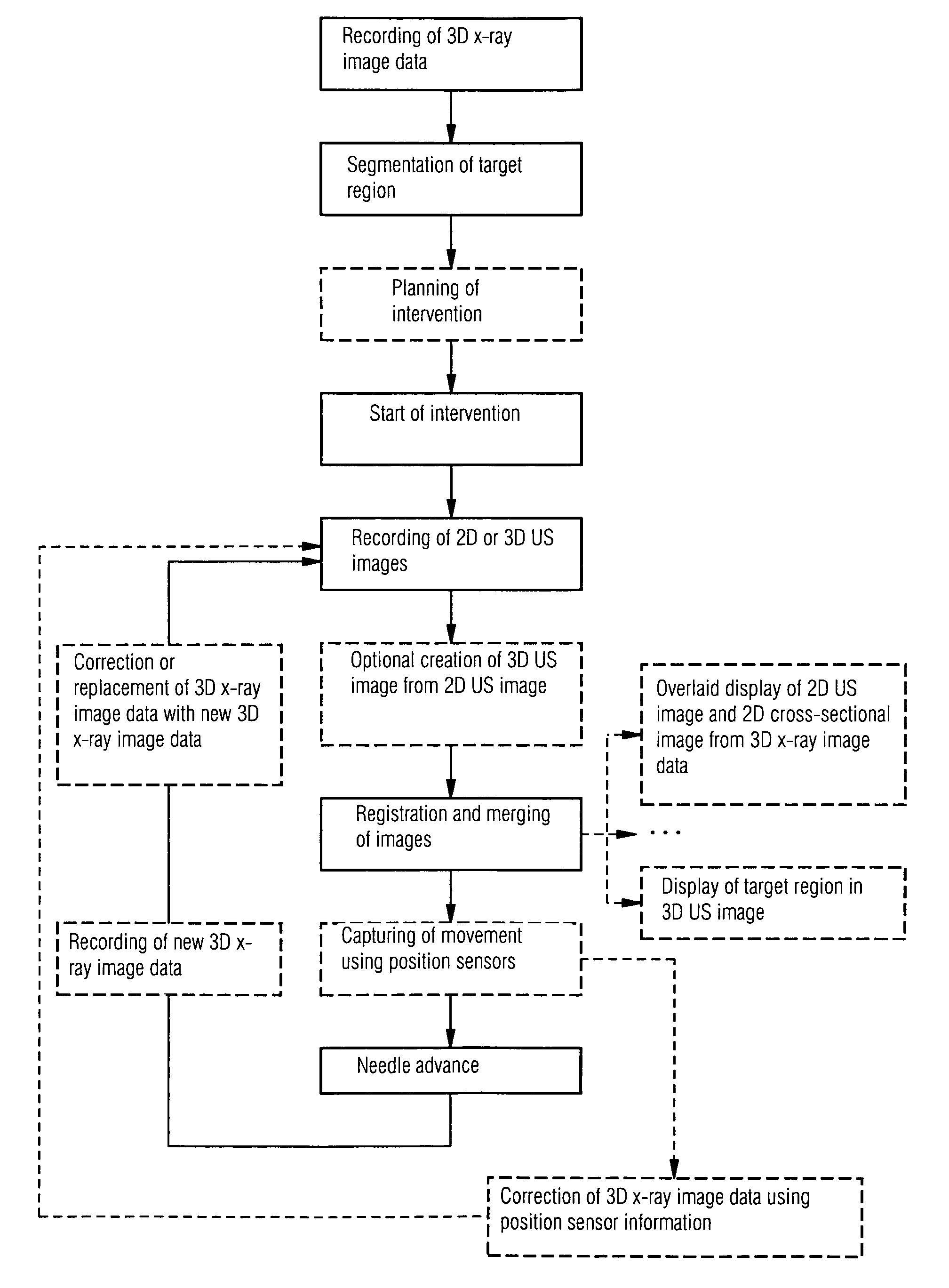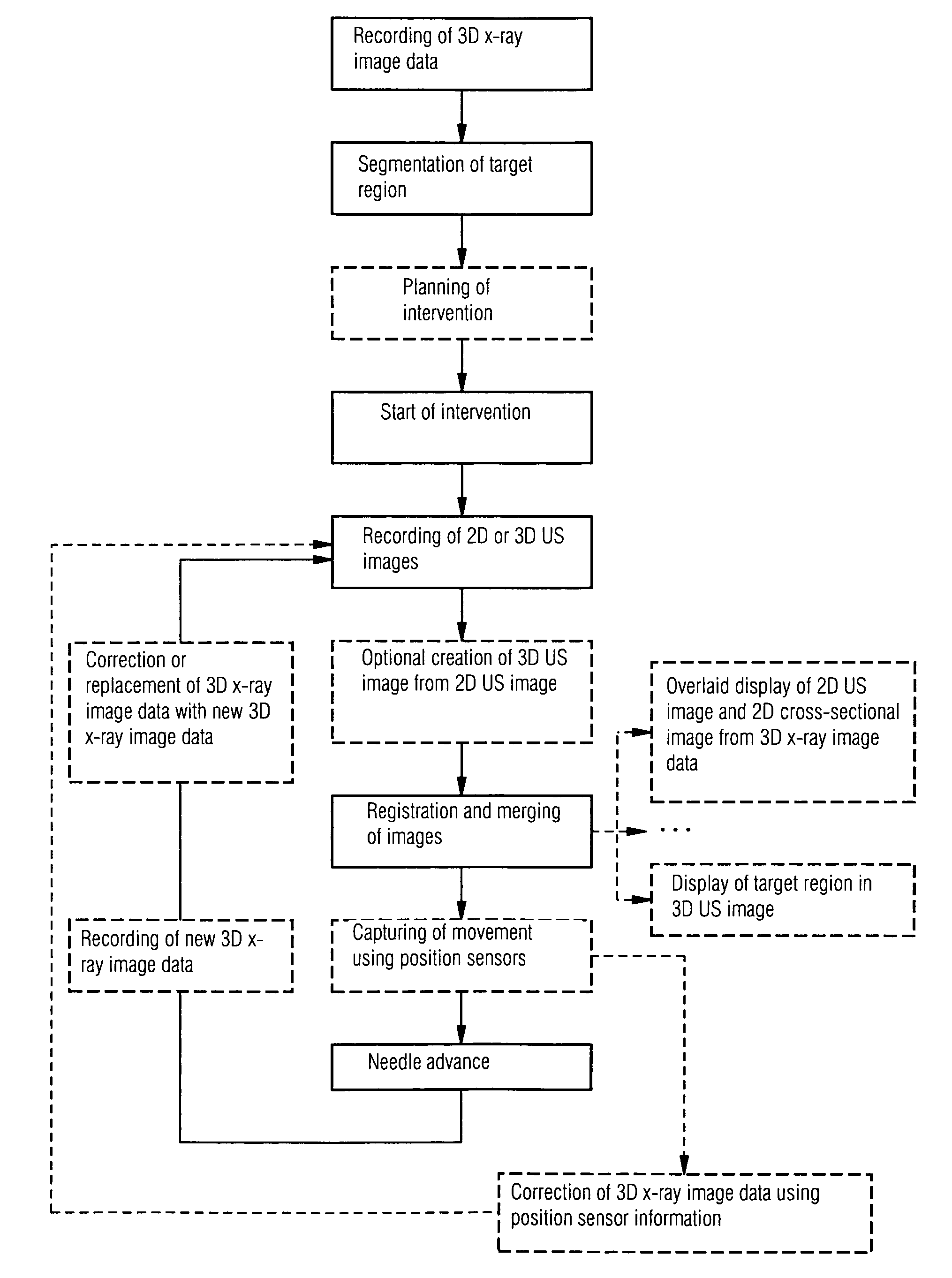Method for assisting with percutaneous interventions
a percutaneous intervention and percutaneous diagnosis technology, applied in the field of percutaneous intervention assistance, can solve the problems of a serious puncture error, a risk of dying from such an intervention, and some limitations of percutaneous diagnosis and therapy, so as to simplify the workflow, facilitate the registration of imaging systems, and improve the accuracy of puncture errors
- Summary
- Abstract
- Description
- Claims
- Application Information
AI Technical Summary
Benefits of technology
Problems solved by technology
Method used
Image
Examples
Embodiment Construction
[0022]The workflow of the proposed method is described here with reference to a liver biopsy. The workflow comprises the following steps:[0023]Step 1: Recording and reconstruction of a 3D DynaCT data record of the liver with high resolution; segmentation of the target region, for example a tumor, and possibly color display in the overall DynaCT data record.[0024]Step 2: Recording of a 3D ultrasound image using an appropriate ultrasound head for 3D imaging or a number of 2D ultrasound images for a known spatial position of the ultrasound head; optionally segmentation of the target region in said ultrasound images.[0025]Step 3: Registration of the recorded ultrasound images (2D or 3D) with the DynaCT data record.[0026]Step 4: Needle advance with image monitoring until the needle has reached the target region in the liver.
[0027]The color display of the tumor in step 1, which can be an option, serves to enhance the identifiability of the tumor for the user in the respective image displa...
PUM
 Login to View More
Login to View More Abstract
Description
Claims
Application Information
 Login to View More
Login to View More - R&D
- Intellectual Property
- Life Sciences
- Materials
- Tech Scout
- Unparalleled Data Quality
- Higher Quality Content
- 60% Fewer Hallucinations
Browse by: Latest US Patents, China's latest patents, Technical Efficacy Thesaurus, Application Domain, Technology Topic, Popular Technical Reports.
© 2025 PatSnap. All rights reserved.Legal|Privacy policy|Modern Slavery Act Transparency Statement|Sitemap|About US| Contact US: help@patsnap.com


